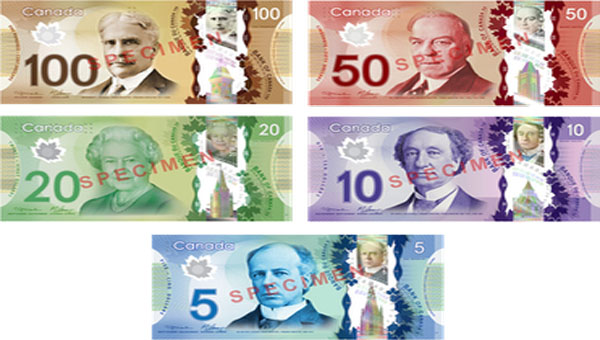You may have heard the term “legal tender” in the news recently. That’s because the Government of Canada has announced that as of January 1, 2021, it will remove legal tender status from some bank notes, namely the $1, $2, $25, $500 and $1,000 bills.
This step comes after legal changes following the 2018 federal budget gave the government power over the legal tender status of bank notes.
Wondering what this means for you? Short answer: this will not affect most Canadians.
What “legal tender” means
First, let’s define the term “legal tender.”
Bank notes issued by the Bank of Canada, along with the coins issued by the Royal Canadian Mint, are what is known as “legal tender.” It’s a technical term, meaning our government has deemed them to be the official money we use in our country.
In legal terms, it means “the money approved in a country for paying debts.”
By removing legal tender status from the $1, $2, $25, $500 and $1,000 bills, the government is essentially saying that you shouldn’t use them in cash transactions or to pay debts.
But rest assured, this does not mean these bank notes will lose their value. The Bank of Canada will honour their face value even after legal tender status is removed.
Have some of these notes? Here’s what to do
If you own any of these older bank notes, you have a few options.
You can redeem them. The simplest way to do this is by going to your financial institution, where they will exchange them for new bills or deposit the amount into your account.
You can also send them to the Bank of Canada, which will continue to honour these bank notes at their face value. For details on how to redeem your notes at the Bank of Canada, you can go to www.bankofcanada.ca/banknotes/bank-note-redemption-service/.
Finally, you can decide to simply keep your notes.
Check the value of your bills before you go to the bank
Some bank notes, such as the $25 and $500, may be worth significantly more than their face value. To find out if your bank notes have a different value to collectors, you can refer to a collector’s catalogue, or obtain an evaluation from two or three money dealers who cater to collectors.
Why remove legal tender status?
The bank notes targeted in this announcement haven’t been produced in decades. Some people might not recognize them anymore, which means they probably wouldn’t be accepted in transactions.
By removing legal tender status from the $1, $2, $25, $500 and $1,000, the government is helping ensure that the Canadian bank notes in circulation are current and easy to use.
The Bank of Canada, which issues Canada’s bank notes, supports this initiative. Keeping notes current means they work more effectively for everyone because they have better security features that make them hard to counterfeit.
With all this, you may wonder whether the government intends to remove legal tender status from any other bank notes. There are no plans to remove legal tender status from any other notes at this time. If it does happen in the future, Canadians will be informed with plenty of time.
If you’d like to learn more about legal tender or Canada’s bank notes, visit our website: bankofcanada.ca/banknotes and follow us on Twitter: @bankofcanada. You can also follow the Bank of Canada Museum on Facebook: @BoCMuseum.
 Pride News Canada's Leader In African Canadian & Caribbean News, Views & Lifestyle
Pride News Canada's Leader In African Canadian & Caribbean News, Views & Lifestyle





